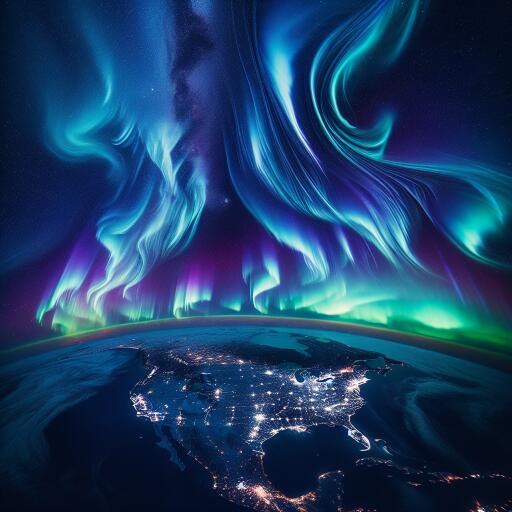Stunning Aurora Displays Anticipated Across Northern U.S. Following Solar Flare Activity
In an awe-inspiring display of the sun’s formidable power, recent solar flare eruptions have cast a wave of anticipation across the globe. These flares, the sun’s most explosive energy releases, have sent a surge of plasma towards Earth, setting the stage for potentially vivid displays of auroras across the northern United States.
The origin of these dazzling light shows lies in the heart of our solar system. Solar flares, intense bursts of radiation, often manifest as bright lights on the sun’s surface. Their impact on Earth extends beyond the mesmerizing visuals; they also have the potential to disrupt radio communications due to the electromagnetic disturbances they cause.
In response to this celestial spectacle, a Geomagnetic Storm Watch was announced this past Saturday. The announcement came on the heels of detections by sun-observing satellites, which noted a significant coronal mass ejection (CME) event. This eruption of plasma, catapulted from the sun’s corona, is expected to grace us with its peak effects by Sunday and Monday, igniting the skies with auroral beauty.
The phenomena behind the glorious auroras are charged particles from the sun colliding with the Earth’s atmosphere. These interactions produce the Northern and Southern Lights, phenomena typically localized to regions close to the Earth’s poles. However, during periods of intense solar activity, these lights can wander far from their usual latitudes.
This week’s solar flares and the resulting CME have set the stage for Northern Lights displays that could extend as far south as New York and as far west as Idaho. Observers in these areas are poised for a rare treat, typically reserved for those at higher latitudes.
Contributing to this scenario is a notably active region on the sun, which has been under observation for its prolific production of both strong and moderate solar flares since late April. Classified into X-class and M-class, with X-class being the most intense, these flares have been particularly active recently. Such solar activities not only captivate with visual splendor but also hold significance for their potential to affect high-frequency radio communications, space launches, and satellite operations. Despite their power, these solar emissions pose no direct threat to the public, as the Earth’s atmosphere shields its inhabitants from the brunt of their energy.
The current flurry of flares is part of the sun’s natural 11-year solar cycle, characterized by periods of increasing and decreasing solar activity. Active regions, such as sunspot group 3663, are hotspots for these flares. This specific region has been incredibly active, unleashing a series of M-class and X-class flares since its emergence. This activity is not only a spectacle for skywatchers but also a point of intense study for scientists seeking to understand the sun’s behavior and its impacts on space weather.
As we look to the skies in the coming days, the potential for breathtaking aurora displays serves as a reminder of the dynamic and powerful forces at play in our solar system. Meanwhile, scientists continue to monitor these developments closely, providing insights and forecasts that help us prepare for and appreciate the effects of our sun’s activity on our planet.
For those lucky enough to be in the viewing areas, the coming nights offer a unique opportunity to witness one of nature’s most extraordinary displays. So, keep your eyes on the skies and be ready to embrace the beauty and power of the auroras, courtesy of our closest star.









